Read the practical framework for leveling up your social media team.
Read the practical framework for leveling up your social media team.
Fashion is a topic that never goes out of trend on social, and there’s so much to be learned from what’s being said and by who.
There’s no doubt that social media provides a wealth of opportunities for fashion brands to take advantage of, but what’s the real ROI when it comes to social listening?
In this blog post we will take you through five reasons why investing in a sophisticated social intelligence tool is an indispensable step in any fashion brands’ continued success.
(Or, keeping an eye on the competition).
While every fashion brand is unique, there’s a lot to be gained in keeping track of how your competition are being discussed on social.
Comparing share of voice (both owned and earned content), sentiment and the key topics around brands that compete with you is key to measuring your brand health on social. Beyond competitor brands, product reception can be compared side by side in a similar way.
We recently updated our Social Index, containing a section on luxury fashion brands, that compares a whole list of top brands and their performance on social media.
Nice work, Chanel.

To stay ahead of the game, progress against competitors ought to be tracked week by week, day by day and even minute by minute (we’ll go into that below).
In an industry so dependent on visuals, image analysis ought to make up a key part of conversation monitoring for fashion marketers.
Our new logo recognition tool Brandwatch Image Insights allows brands to find instances of their logo used in tweeted images, allowing marketers a window into the ways consumers are viewing and experiencing their products.
Below is an example from Burberry mentions – luxurious images of perfume and shopping hauls appear alongside selfies taken with a “My Burberry Blush” filter, screenshots from the online store and even a Tony the Tiger themed box (perhaps an example of logo misuse).
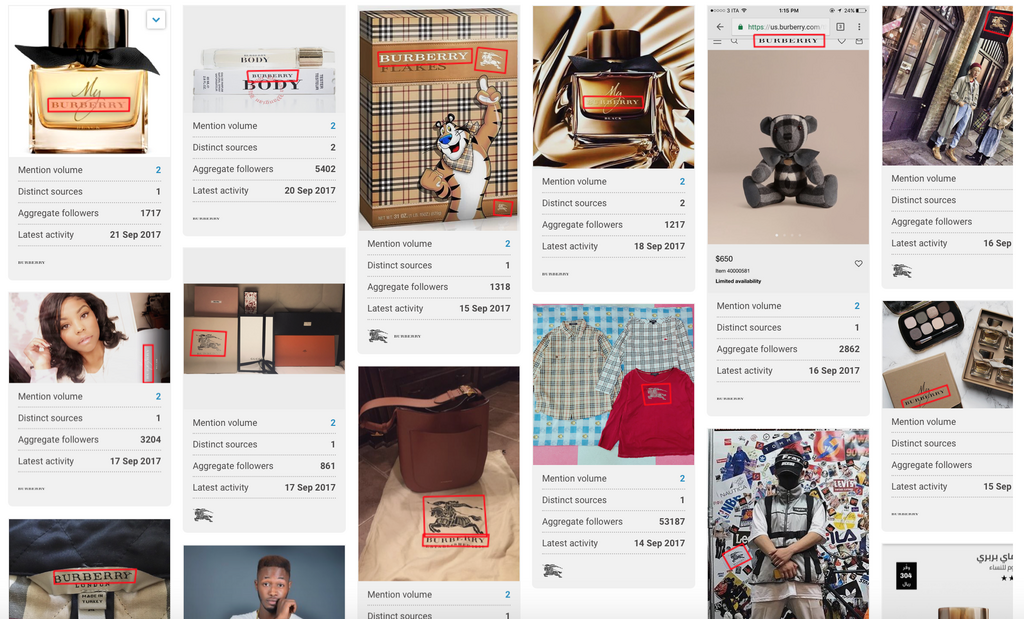
Logo recognition often highlights the brand mentions that go amiss when marketers focus solely on text mentions.
Of all the Burberry image mentions we tracked between June 15th and September 20th 2017, only around 20% of them actually mentioned Burberry in the accompanying text.
These are vital mentions that show products “in the wild” and can even help identify fake merchandise – miss them at your peril.
Image insights can also help surface themes and influencers.
For example, marketers might find that people are often enjoying their products outside, or at certain events. Or, perhaps, that a certain celebrity really, really loves wearing their clothes.
Whether or not Louis Tomlinson’s relationship with VANS is paid is unknown to us, but if it’s not this could be a great opportunity for the brand to make it official.
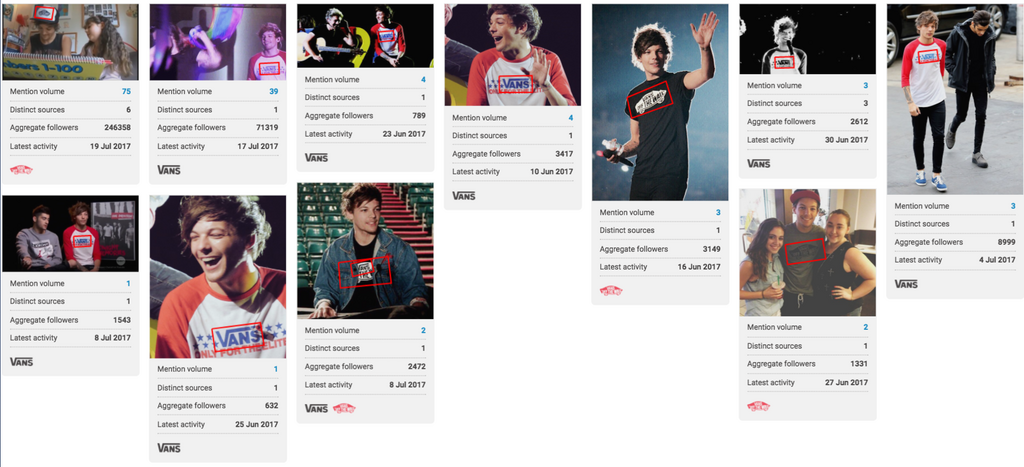
The fashion industry relies on personalities to start trends, and there are all kinds of ways to do this.
Starting with “high fashion,” paying attention to the people influencing the conversations around fashion weeks and big launches can offer key opportunities for marketers to create relationships or people of interest to follow.
Here’s a simple example from some NYFW data we released last year.
We tracked mentions of the event as it went on and then identified the top 10 accounts gaining the most impressions in the conversation.
There’s nothing stopping you going further than the top ten, or selecting your own terms for what counts as influence around events that are important to you and trialling them in the Brandwatch Analytics platform.
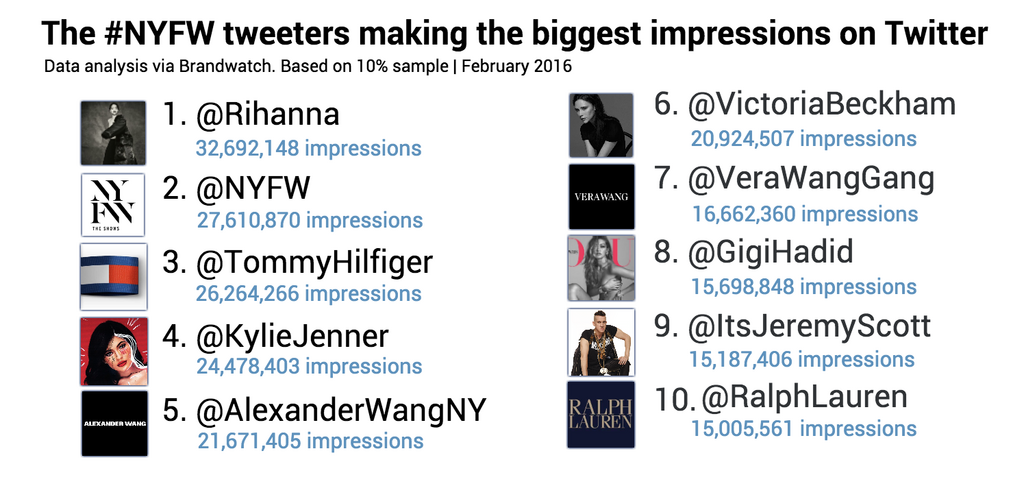
Social media gives everyone with a smartphone a voice, and beyond the Rihannas and the Kylie Jenners influence does not solely lie with the celebrity.
Fashion brands can now identify those with large, engaged and loyal followings who exist outside of celebrity circles and explore the exciting, and often lest costly, opportunities that come with this new generation of fashion gurus.
Using a tool like Brandwatch Audiences, marketers can search for authors that adhere to a whole variety of criteria – tweet content, gender, location, bio information, interests etc.
That list of influencers that fit your niche can be exported to CSV, used for Twitter ads, compared to other audiences and more.
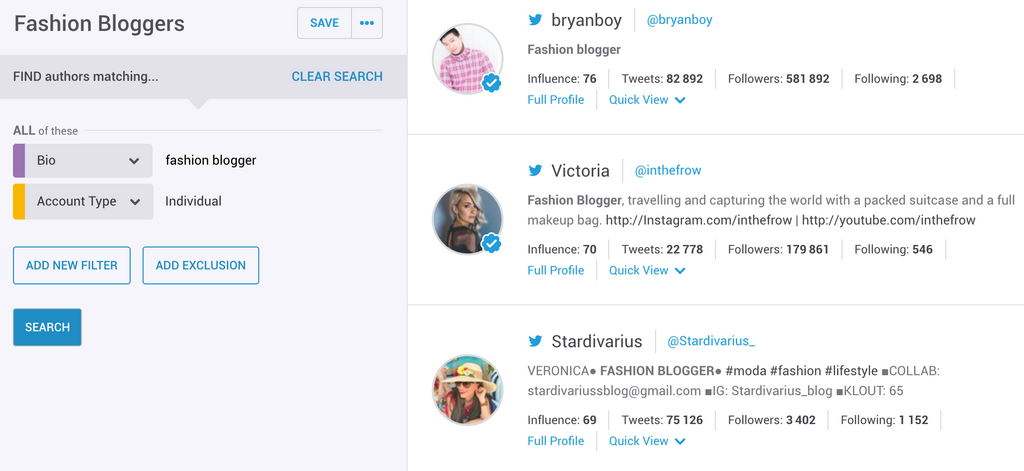
And beyond influencers, social listening allows you to really get to know your customer base.
Go beyond basic demographics and find patterns and trends you hadn’t expected – find out who they really are. Here’s an example of a use of Audiences that reveals a little about the followings of these fashion brands.
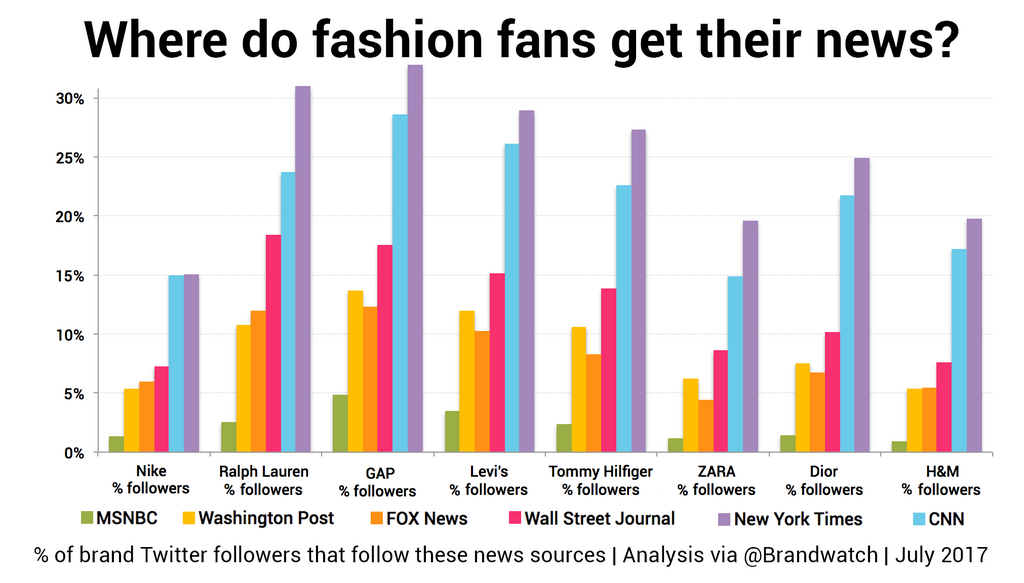
The beauty of Brandwatch Analytics is its versatility – your search for insights can be as wide or narrow as you like.
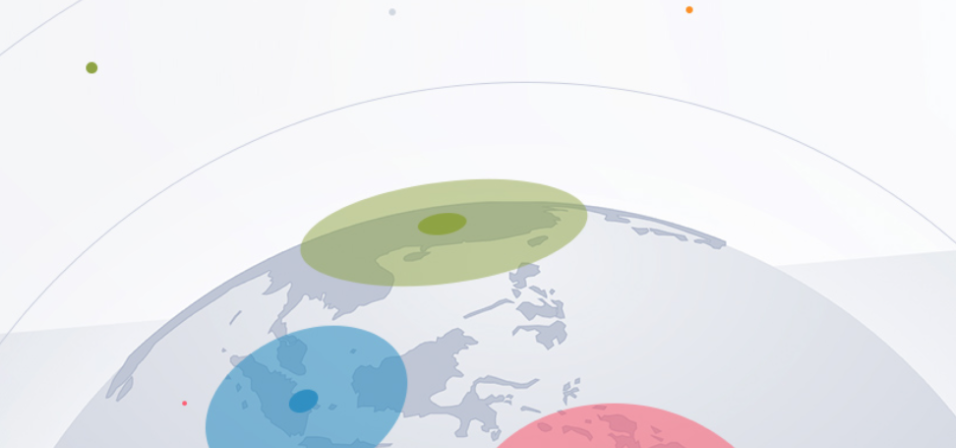 One way to use it is to identify global trends in your industry. Here’s an example:
One way to use it is to identify global trends in your industry. Here’s an example:
One of our clients uses Brandwatch Analytics to track where conversations about new hairstyles start and grow throughout the globe.
They search for the early innovators who create and champion new styles, figuring if they can find out where in the world new hairstyles are more likely to start, then they can monitor that region and learn about new trends before anyone else.
With Brandwatch’s global data sources, they scoured the web and found consistently that conversation about new hairstyles often started in Asia before spreading to other parts of the globe.
Using Brandwatch to monitor the region to discover new trends – like dip dye or hair chalk – they were able to get a head start updating their product portfolio to accommodate for the increase in consumer desire.
You can find out more about our world leading AsiaPac data coverage here.
We’ve already mentioned fashion weeks, but sometimes a key campaign or crisis requires real-time monitoring.
Here at Brandwatch, we’re well equipped to do just that.
The moments that matter (and the moments that don’t) can be tracked minute-by-minute and you can quickly identify what’s influencing the conversation by simply clicking into the mentions and finding out what’s happening. And you don’t need to be watching all the time.
Our Signals and Alerts will give you a prompt heads up whenever significant changes occur in the data.
Visualizing events is no problem either.
With Brandwatch Vizia, you can now watch mentions of your brand, event or product unfold minute-by-minute alongside all the other tiles that help make sense of all your business data.
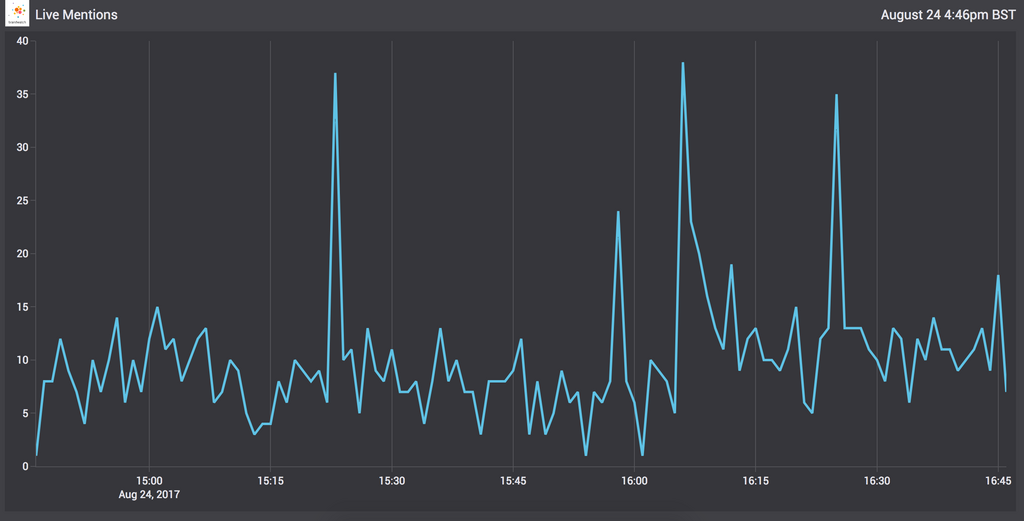
Whether your new line of handbags has just gone down smashingly or a piece of backstage gossip at your show is beginning to spark outrage, you’ll know about it fast enough to react.
Like we said, fashion and social media go hand in hand.
What’s trending is no longer necessarily what’s on the pages of Vogue but instead the endless scrolls of Instagram, and staying on top of the social media tide is the way forward.
If you’re ready to chat, why not see Brandwatch in action for yourself by booking a demo.
Offering up analysis and data on everything from the events of the day to the latest consumer trends. Subscribe to keep your finger on the world’s pulse.
Consumer Research gives you access to deep consumer insights from 100 million online sources and over 1.4 trillion posts.
Existing customer?Log in to access your existing Falcon products and data via the login menu on the top right of the page.New customer?You'll find the former Falcon products under 'Social Media Management' if you go to 'Our Suite' in the navigation.
Brandwatch acquired Paladin in March 2022. It's now called Influence, which is part of Brandwatch's Social Media Management solution.Want to access your Paladin account?Use the login menu at the top right corner.



